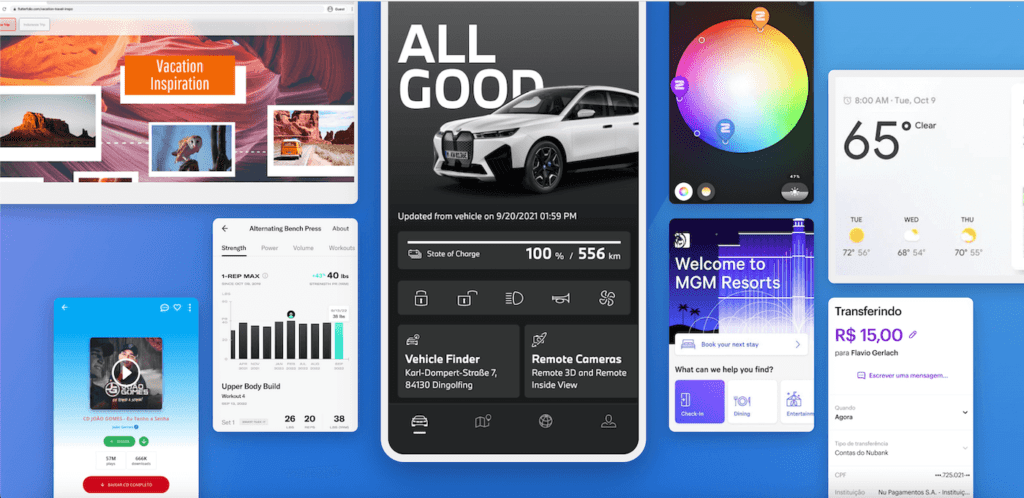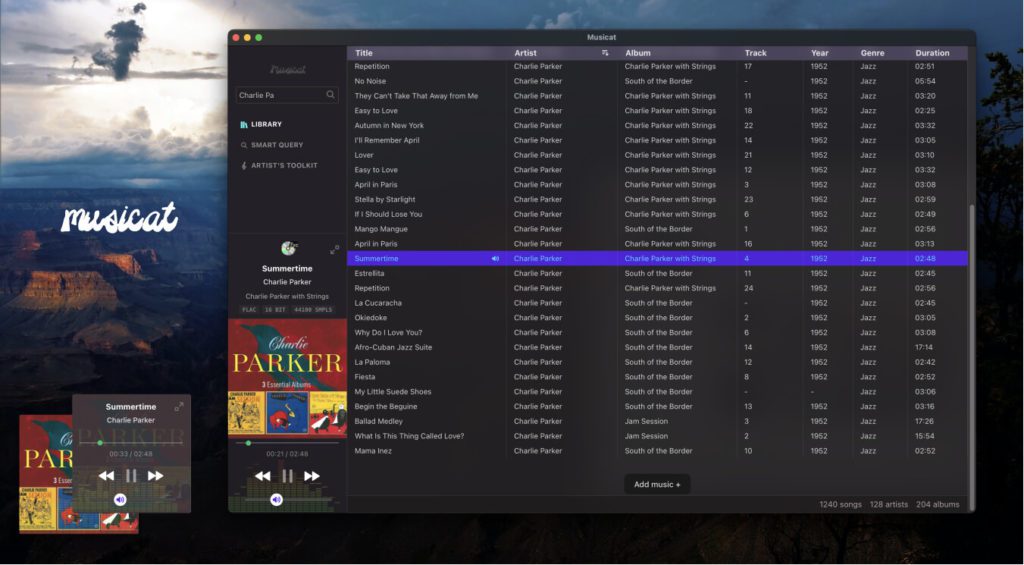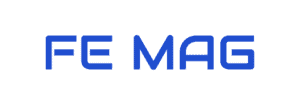As technology advances, developers are constantly seeking more efficient and cost-effective ways to create applications that can run on multiple platforms. This is where cross-platform development comes in, allowing you to write a single codebase that can be used across multiple platforms.
Tauri and Flutter are two popular cross-platform development frameworks that have gained significant popularity in recent years. Tauri is a lightweight and flexible framework that allows you to build fast, minimalistic applications with easy access to native features. Flutter, on the other hand, is a more robust framework that focuses on creating beautiful and responsive user interfaces.
In this comprehensive comparison, we will explore the advantages and limitations of both Tauri vs Flutter, and provide a detailed comparison of key features such as performance, development tools, user interface design, community support, security, cost, learning curve, compatibility, extensibility, maintenance, scalability, and use cases. By the end of this post, you should have a clear understanding of which framework is best suited for your specific needs.
Overview of Tauri

Tauri is a relatively new and lightweight cross-platform development framework written in Rust that focuses on building fast and minimalistic applications. It was first released in 2020 and is open-source, which means that you can contribute to its development and access a wide range of features and tools.
Currently, Tauri is primarily designed for desktop application development, however, the Tauri team is actively working on expanding its capabilities to include mobile development as well.
Advantages of Using Tauri
Tauri offers several advantages for building cross-platform applications. Some of the key advantages include:
1. Access to native features
Tauri allows you to easily access the native features of a device, such as camera, GPS, and file storage. This is a critical advantage when developing applications that need to interact with hardware or software specific to a particular platform.
2. Small file size and fast startup time
Tauri applications are known for their small file sizes and fast startup times. This makes them ideal for use in low-resource environments or on older devices, where larger applications may not run smoothly.
3. Flexible and customizable
Tauri is designed to be flexible and customizable, which means that you can use any frontend framework and integrate with a wide range of backend technologies. This makes it easier to build custom applications that meet specific requirements.
4. Security
Tauri is designed with security in mind and offers several security features, such as HTTPS support and sandboxing, which help to protect against common security threats.
Limitations of Tauri
While Tauri offers many advantages for cross-platform development, there are also some limitations that you should be aware of. Some of the key limitations include:
1. Lack of maturity
Tauri is a relatively new framework and is still in active development. This means that it may not have the same level of community support or stability as more established frameworks.
2. Limited documentation
As a new framework, Tauri’s documentation is still relatively limited. This can make it more difficult for you to get started with the framework, especially if they are not familiar with its underlying technologies.
3. Limited third-party library support
Tauri’s ecosystem is still growing, which means that there may be limited third-party library support compared to more established frameworks. This can make it more difficult for you to find the resources you need to build complex applications.
4. Limited UI capabilities
Tauri is not designed specifically for building complex user interfaces, so you may need to use additional frontend frameworks to create more sophisticated UIs.
Overview of Flutter

Flutter is an open-source UI toolkit for building natively compiled applications for mobile, web, and desktop platforms. Developed by Google, it has gained popularity for its ease of use and ability to create high-performance, visually appealing user interfaces.
Flutter uses the Dart programming language, which is easy to learn and use, and provides a modern, reactive programming model. This makes it easier for you to build complex applications with less code and fewer bugs.
Advantages of using Flutter
Flutter has several advantages for cross-platform development, including:
1. Fast development cycles
One of the key advantages of Flutter is its “hot reload” feature, which allows you to see changes they make to the code in real time. This can help to speed up the development process and make it easier to experiment with different designs and features.
2. Cross-platform compatibility
Flutter allows you to build applications for multiple platforms, including mobile, web, and desktop, using a single codebase. This can help to save time and resources, as you do not need to create separate versions of the application for each platform.
3. High-performance UIs
Flutter uses a powerful graphics engine called Skia to render UIs, which allows it to create highly performant and visually appealing user interfaces. This makes it well-suited for building complex applications with sophisticated designs.
4. Extensive widget library
Flutter provides a wide range of pre-built widgets and tools, which can help to streamline the development process and reduce the amount of code needed to build an application. This can help to save time and resources and make it easier for you to create high-quality applications.
5. Strong community support
Flutter has a large and active community of developers, which provides a wealth of resources and support for those using the framework. This can make it easier for you to get started with Flutter and find the resources you need to build your applications.
Limitations of using Flutter
Although Flutter has many advantages, there are some limitations to consider when using the framework for cross-platform development:
1. Limited platform-specific features
Because Flutter is designed to create cross-platform applications, it can sometimes be limited in its ability to access platform-specific features. This can make it difficult to create applications that fully leverage the unique capabilities of each platform.
2. Larger app sizes
Flutter applications can have larger file sizes than applications built with other frameworks or native development tools. This is because Flutter includes a lot of pre-built code and resources, which can increase the overall size of the application.
3. Steep learning curve
While Flutter is designed to be easy to use, it can still have a steep learning curve for developers who are not familiar with the Dart programming language or reactive programming concepts.
4. Limited performance for some use cases
Although Flutter is known for its high-performance UIs, it may not be the best choice for some use cases that require high computational or graphics processing power.
Comparing Tauri vs Flutter
Let’s take a closer look at how Tauri and Flutter compare to each other.
User Interface

When it comes to user interface (UI) development, Flutter has a significant advantage over Tauri. Flutter uses its own widget library, which offers a wide range of customizable UI components. These widgets are designed to look and feel like native components, providing a seamless user experience across different platforms.

In contrast, Tauri relies on HTML, CSS, and JavaScript to create its UI components. While this approach can be familiar to web developers, it can result in UI components that don’t match the look and feel of native applications.
Flutter’s widget library is extensive, including widgets for buttons, text, images, animations, and more. This library is also open-source, which means that you can create your own custom widgets and contribute them to the community.
In summary, while Tauri’s use of web technologies makes it easy for web developers to transition to desktop development, Flutter’s widget library provides a more robust and customizable user interface.
Use of Native Features
One of the key advantages of using a cross-platform development framework is the ability to access native features on different platforms. Both Tauri and Flutter provide access to native features through plugins and APIs.
Tauri has a modular architecture that makes it easy to add additional functionality and access to native features. It provides access to native features through Rust libraries, which allows you to use native code and libraries on different platforms. Tauri also supports platform-specific configuration files, which can be used to customize your application’s behavior on different platforms.
Flutter also provides access to native features through its plugin system. It has a large library of plugins that provide access to a wide range of native features, including camera, GPS, and sensors. Flutter’s plugin system is easy to use, and it provides a consistent API across different platforms.
Both Tauri and Flutter provide access to native features, but Flutter’s extensive library of plugins gives it an edge in this area. If your application requires access to a wide range of native features, Flutter may be the better choice. However, if you need to customize your application’s behavior on different platforms, Tauri’s support for platform-specific configuration files may be more useful.
Performance
For desktop app development, Tauri uses native desktop components, which means that it can provide better performance compared to Flutter. On the other hand, Flutter uses its rendering engine, which can result in slower performance than Tauri.
However, Flutter’s performance is still impressive, thanks to its use of Dart programming language and Just-in-Time (JIT) compilation. Flutter’s JIT compilation allows you to see changes in real time during development, which can improve the development process.
In terms of overall performance, Tauri has an edge due to its use of native components, while Flutter still offers good performance with its JIT compilation and rendering engine.
Development
Tauri’s use of web technologies makes it easy for web developers to transition to desktop development, as they are already familiar with the tools and languages. It also makes it easy to integrate with other web-based services and tools.
On the other hand, Flutter’s use of the Dart programming language offers several advantages, including its strong type system, garbage collection, and JIT compilation. Dart’s syntax is similar to that of Java and C++, making it easy for developers from those backgrounds to learn.
Both frameworks offer hot reloading, allowing you to see changes in real time. However, Flutter’s hot reloading is more advanced, as it preserves the state of the app, making it faster and more efficient.
Overall, both frameworks offer efficient development processes. If you come from a web development background, Tauri may be the better choice, while Flutter is more suitable for those with a background in object-oriented programming languages.
Security
Security is a critical consideration in any application development project. Both Tauri and Flutter offer various security features to ensure the safety and privacy of users’ data.
Tauri is built on top of web technologies, and as such, it inherits the same security considerations as web applications. You must ensure that your applications are secure from common web vulnerabilities, such as cross-site scripting (XSS) and SQL injection attacks.
Flutter, on the other hand, provides a more secure development environment. Flutter’s ahead-of-time (AOT) compilation means that the compiled code is more challenging to reverse-engineer, making it more difficult for attackers to analyze the code and identify potential vulnerabilities. Flutter also includes built-in security features, such as encryption and secure storage for sensitive data.
In addition, Flutter’s use of Dart, a statically-typed language, helps to prevent common security vulnerabilities such as null pointer exceptions and type mismatch errors.
In summary, while both Tauri and Flutter offer various security features, Flutter’s use of Dart, built-in security features, and AOT compilation make it a more secure development environment.
Flexibility
Flexibility is another important aspect to consider when comparing Tauri and Flutter. Flexibility refers to how easily the framework can adapt to different requirements and how well it can integrate with other technologies.
In terms of flexibility, Tauri offers a high level of flexibility due to its modular architecture. Tauri’s plugin system allows you to easily add new features to your application by writing plugins in any language, which makes it easy to integrate Tauri with existing technologies. Additionally, Tauri allows you to use any front-end framework of your choice, which gives them the flexibility to choose the best tool for the job.
Flutter, on the other hand, is less flexible in terms of integration with other technologies due to its tightly integrated architecture. While Flutter provides a rich set of built-in widgets and tools for creating beautiful and performant UIs, it may require more effort to integrate with other technologies or use non-native libraries.
Overall, Tauri offers more flexibility than Flutter, making it a good choice for integrating with existing technologies or using a specific front-end framework. However, if you value a tightly integrated framework with a strong focus on UI development, Flutter may be the better choice.
Extensibility
Extensibility refers to a framework’s ability to be customized and extended through the use of plugins, libraries, and other third-party tools. This is important for cross-platform development, as it allows you to add functionality and features that are not available out of the box.
Tauri’s architecture makes it highly extensible. It provides a plugin system that allows you to easily add new features and integrate them with other tools and technologies. Tauri also supports the use of any JavaScript library or framework, which provides even more flexibility for customization.
Flutter, on the other hand, is harder to extend and customize. However, it has a strong community of developers who are constantly creating new plugins and libraries to expand its capabilities.
Overall, both frameworks offer extensibility through the use of plugins, libraries, and third-party tools. Tauri’s architecture makes it highly extensible and flexible, while Flutter’s strong community ensures that new plugins and libraries are constantly being developed to expand its capabilities.
Scalability
Scalability is an important consideration when choosing a cross-platform development framework. As your application grows and the number of users increases, you need a framework that can handle the additional load and scale as required.
Tauri is designed to be scalable, and it can handle complex applications with ease. Its modular architecture allows you to add additional functionality as needed, and it is optimized for high performance and low resource consumption.
Flutter also has excellent scalability, and it is designed to handle high-performance applications with ease. It uses a reactive programming model, which enables it to handle complex and dynamic user interfaces efficiently.
Both Tauri and Flutter are highly scalable, and they can handle complex applications with ease. However, Flutter’s reactive programming model makes it an ideal choice for applications that require dynamic and complex user interfaces.
Learning Curve
The learning curve is an essential factor to consider when choosing a cross-platform development framework. The easier a framework is to learn and use, the faster you can create high-quality applications.
Tauri and Flutter have different approaches when it comes to the learning curve. Tauri’s use of web technologies and existing frameworks such as React, Vue, and Angular make it easier for web developers to adapt to Tauri. The familiarity of these frameworks can reduce the learning curve for developers who are already proficient in web development.
Flutter, on the other hand, uses a unique programming language called Dart, which can be challenging for developers who are not familiar with it. However, Flutter’s extensive documentation and community support make it easier to learn and get started with the framework.
Overall, Tauri’s use of familiar web technologies and existing frameworks can make it easier for web developers to adapt to the framework, while Flutter’s extensive documentation and community support can help you overcome the challenge of learning a new programming language.
Maintenance
When developing cross-platform applications, maintenance is a critical consideration. It is important to choose a framework that is actively maintained and updated to ensure that it remains compatible with the latest operating systems and devices.
Tauri is a relatively new framework, but it has a dedicated team of developers who are actively working on its development and maintenance. Tauri also has a strong open-source community, which contributes to its ongoing maintenance and updates.
Flutter, on the other hand, is a more established framework with a large and active community of developers. It is backed by Google, which provides ongoing support and maintenance, ensuring that the framework remains up-to-date with the latest features and security updates.
Both Tauri and Flutter are actively maintained, but Flutter’s backing by Google and a large community ensures that it is likely to remain a stable and reliable option for cross-platform development for the foreseeable future.
Community Support
Both Tauri and Flutter have active and supportive communities, offering you access to a wealth of resources, tutorials, and libraries.
Tauri’s community is smaller than Flutter’s, but it is growing rapidly. The Tauri team provides extensive documentation and tutorials on their website, along with a community forum where you can ask questions and share your projects. They also have a dedicated Discord server, where you can connect with each other and the Tauri team.
Flutter’s community is much larger and more established, with a vast array of resources available online. The Flutter team provides extensive documentation and tutorials on their website, along with a dedicated YouTube channel and community. They also have a robust ecosystem of libraries and packages, such as FlutterFire, which provides access to Firebase services.
Both frameworks have active open-source communities, allowing you to contribute to the development of the frameworks and your associated tools. However, Flutter’s larger community means that there are more resources available, making it easier to find solutions to problems you may encounter during development.
Cost
Cost is an essential factor to consider when choosing a cross-platform development framework. Both Tauri and Flutter are open-source and free to use.
However, the cost of developing and maintaining an application using either framework can vary significantly depending on the project’s complexity and the developer’s skill level.
In terms of development cost, Flutter has an advantage over Tauri due to its comprehensive documentation and a vast library of pre-built UI components. These resources can significantly reduce development time and cost, especially for complex UI designs.
On the other hand, Tauri has a smaller development community, which means that finding the necessary resources and support for complex projects may be more challenging. Additionally, Tauri’s reliance on web technologies may require additional resources for web hosting and maintenance.
Overall, both Tauri and Flutter offer cost-effective development options, but you should consider the complexity of your project and the resources available before choosing a framework.
Use Cases
When deciding between Tauri and Flutter for cross-platform development, it’s important to consider the specific use case for your project. Here are some scenarios where Tauri and Flutter may be more suitable:
Tauri:
- Projects that require direct access to system-level APIs
- Applications that need to be packaged as a standalone executable file
- Small to medium-sized applications that do not require complex user interfaces
- Projects that require rapid prototyping and development cycles
- Applications that need to run in resource-constrained environments, such as embedded systems or low-end hardware
Flutter:
- Projects that require a rich and visually appealing user interface
- Large-scale applications that require complex animations and graphics
- Applications that need to be deployed across a wide range of devices and platforms
- Projects that require access to platform-specific APIs and features
- Applications that need to support multiple languages and internationalization
Conclusion
In conclusion, both Tauri and Flutter are great options for cross-platform development. Tauri is a lightweight and flexible framework that allows for the creation of desktop applications with a native look and feel, and it has the advantage of being built on top of popular web technologies. Its biggest strengths lie in its small footprint and quick startup time, making it ideal for simple applications or prototypes.
Flutter, on the other hand, provides a more comprehensive solution for mobile, web, and desktop applications. It offers a rich set of widgets, tools, and libraries that can be used to create beautiful and performant user interfaces, and its Dart programming language makes it easy to build and maintain applications. Flutter’s hot reload feature also allows for a fast development cycle, which is great for iterative development.
In the end, both Tauri and Flutter are solid choices for cross-platform development, and you can’t go wrong with either one. It all comes down to what you prioritize in your project, whether it’s speed of development, performance, or native look and feel. Whatever you choose, be sure to explore the full capabilities of the framework and make the most out of it.
FAQs
Q: What is Tauri?
A: Tauri is an open-source toolkit for building native applications using web technologies like HTML, CSS, and JavaScript.
Q: What is Flutter?
A: Flutter is an open-source UI toolkit for building natively compiled applications for mobile, web, and desktop from a single codebase.
Q: Which is better for cross-platform development, Tauri or Flutter?
A: The answer depends on your specific project requirements. Both Tauri and Flutter have their advantages and limitations, so you should evaluate which one suits your needs best.
Q: Is Tauri more performant than Flutter?
A: Tauri and Flutter have different performance characteristics depending on the use case. In general, Tauri has a smaller footprint and faster start-up times, while Flutter offers better rendering performance.
Q: Is Tauri easier to learn than Flutter?
A: Tauri and Flutter have different learning curves, and it depends on your familiarity with web technologies and programming in general. Tauri uses web technologies like HTML, CSS, and JavaScript, which may be easier to learn for web developers, while Flutter uses its own language, Dart.
Q: Are Tauri and Flutter suitable for large-scale projects?
A: Yes, Tauri and Flutter are suitable for large-scale projects. They offer good scalability and extensibility, which makes them suitable for complex projects.
Q: Is community support important when choosing between Tauri and Flutter?
A: Yes, community support is important for both Tauri and Flutter. They have active communities, and you can find helpful resources and libraries for both.
Q: Is security a concern when using Tauri or Flutter?
A: Security is always a concern in software development, and both Tauri and Flutter offer good security practices. However, it’s important to follow best practices and keep up-to-date with security updates for both platforms.
Q: Which platform offers better support for native features?
A: Flutter offers better support for native features since it has built-in support for Material Design and Cupertino (iOS) widgets, which provide a more native look and feel. Tauri requires more manual integration to achieve a native look and feel.


the learning curve of rust compared to dart is much steeper, this should also be considered in my opinion.